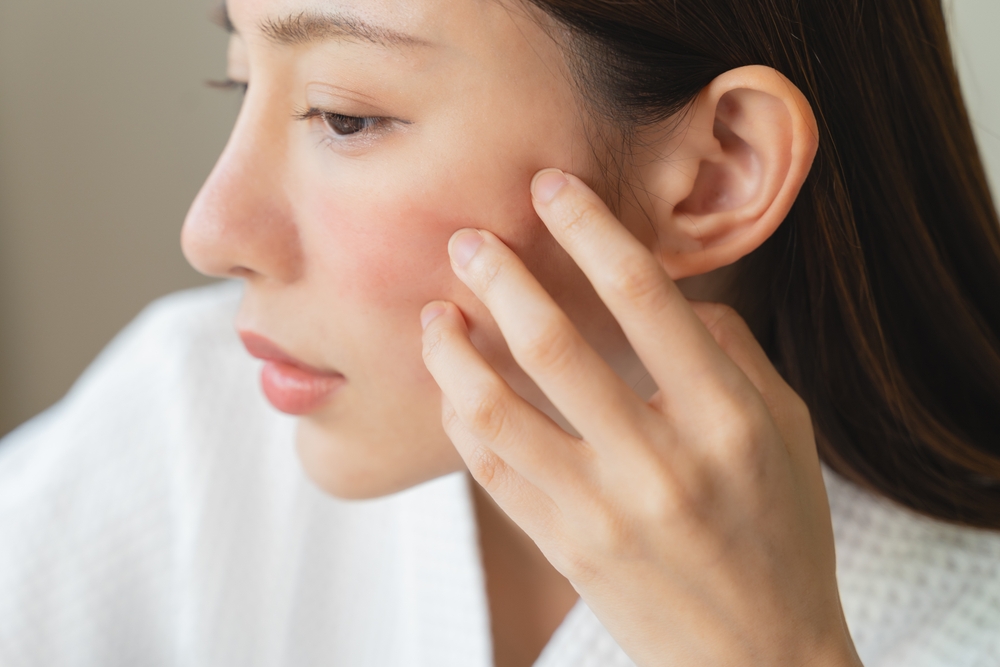Acne is one of the most common skin conditions, impacting individuals across all age groups. However, for those experiencing early-onset acne—defined as acne developing before the typical teenage years—the question of “why so early?” often arises. Genetics plays a significant role in determining when and how acne manifests, and telehealth solutions are reshaping the way people access personalized acne care.
What is Early-Onset Acne?
Early-onset acne refers to the development of acne in children or preteens, often before the age of 10. This can include:
- Small bumps, blackheads, or whiteheads across the forehead or nose.
- Papules or pustules on the cheeks, chest, or back.
- Persistent inflammation that doesn’t resolve with basic skincare routines.
Unlike traditional teenage acne, early-onset acne may indicate a more substantial genetic influence or underlying hormonal imbalances, particularly in prepubescent children.
The Genetic Connection to Acne
Acne is a multifactorial condition, meaning it arises due to a combination of factors, including:
- Sebaceous gland activity
- Hormonal fluctuations
- Immune response to bacteria
Genetics affects each of these components, making some individuals more predisposed to acne than others. A family history of acne can increase the likelihood of developing acne earlier in life.
Key Genetic Factors in Early-Onset Acne
- Sebum Overproduction:
Genetic variations can lead to an overactive sebaceous gland, resulting in excess oil production that clogs pores. - Hyperkeratinization:
Some individuals inherit a tendency for skin cells to shed abnormally, which contributes to blocked hair follicles. - Immune Response to Propionibacterium acnes (P. acnes):
Genetics influence how strongly the immune system reacts to bacteria on the skin. A heightened inflammatory response can exacerbate acne severity. - Hormonal Sensitivity:
Sensitivity to androgens, the hormones that regulate sebum production, is often inherited.
Early-Onset Acne and Telehealth Solutions
Telehealth platforms like OMNIA TeleHEALTH provide an innovative approach to managing early-onset acne. By connecting patients with dermatology experts remotely, telehealth eliminates barriers to care such as travel, wait times, and geographical limitations.
Advantages of Telehealth for Acne Management
- Convenience: Patients can consult with specialists from the comfort of their homes.
- Personalized Care Plans: Dermatologists can design individualized treatment plans tailored to genetic factors.
- Regular Monitoring: Virtual follow-ups ensure treatment efficacy without the need for in-person visits.
Telehealth tools also facilitate genetic screening and testing, allowing practitioners to identify whether hereditary factors significantly contribute to a patient’s acne presentation.
Addressing Myths About Genetics and Acne
Misunderstandings about acne and its causes are widespread. Here’s what you should know:
- Myth: Acne is only caused by poor hygiene.
Fact: While proper skincare helps, genetics and internal factors often play a larger role. - Myth: Early-onset acne means a lifetime of severe acne.
Fact: Early treatment—especially when tailored to genetic predispositions—can help manage and prevent long-term skin issues. - Myth: Acne always clears up after adolescence.
Fact: Adult acne is common and can also be influenced by genetic factors.
Treatment Options Tailored to Genetic Factors
With genetics playing a significant role in early-onset acne, treatment must address the unique needs of each patient. Here are some targeted approaches:
- Topical Retinoids:
Effective for reducing hyperkeratinization and unclogging pores. - Oral Medications:
Antibiotics, hormonal treatments, or isotretinoin may be prescribed based on the severity of the condition and family history. - Dietary Adjustments:
While not directly linked to genetics, addressing food sensitivities may improve overall skin health. - Skincare Routine:
Products designed for sensitive or acne-prone skin types are essential.
The Future of Genetic Research in Acne Treatment
Ongoing research aims to uncover specific genetic markers that could predict acne severity and response to treatment. In the future, telehealth platforms may integrate genetic data into their assessments, enabling even more precise treatment plans.
OMNIA TeleHEALTH bridges the gap between cutting-edge science and accessible care. For early-onset acne, their telehealth services provide:
- Thorough patient evaluations, including genetic and lifestyle assessments.
- Expert guidance on evidence-based treatment protocols.
- Tools for continuous monitoring and adjustment of care plans.
Why Early Intervention Matters
Untreated early-onset acne can lead to long-term complications, including scarring and psychological distress. Identifying and addressing the genetic components of acne early improves treatment outcomes and reduces the likelihood of chronic issues.
Understanding the genetic basis of early-onset acne empowers patients and caregivers to take proactive steps toward effective management. By leveraging telehealth solutions, patients gain access to tailored, expert care without the constraints of traditional office visits. Whether it’s assessing familial risks or designing customized treatment protocols, OMNIA TeleHEALTH is at the forefront of acne care innovation.
Sources
- Tanghetti, E. A., Del Rosso, J. Q., & Thiboutot, D. M. (2014). Understanding Sebum Production and Its Role in Acne. Journal of Clinical and Aesthetic Dermatology.
- Pappas, A. (2009). The Relationship of Sebum Secretion to the Development of Acne. Dermato-Endocrinology.
- Williams, H. C., & Dellavalle, R. P. (2012). Acne Vulgaris: Pathogenesis and Treatment. Lancet.


